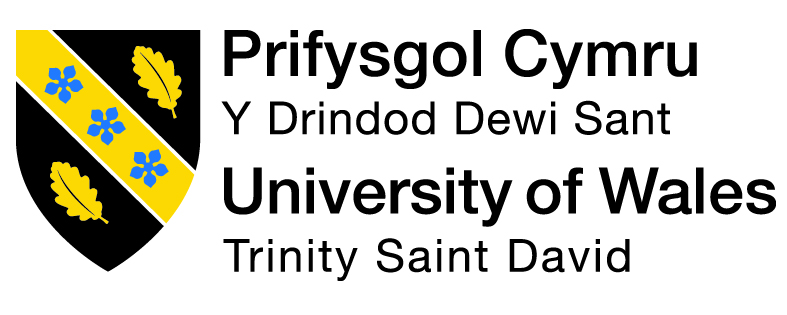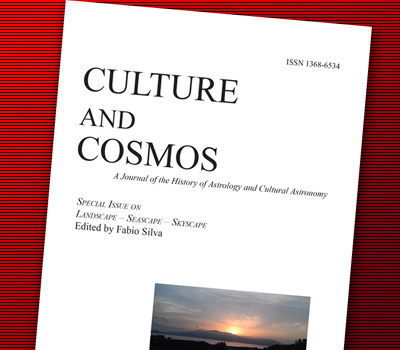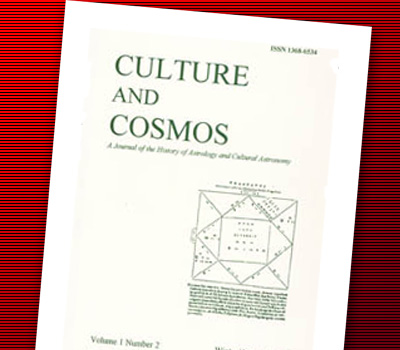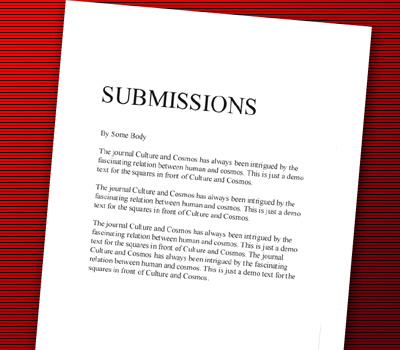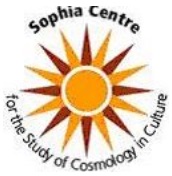We are currently seeking submissions for future volumes of Culture and Cosmos.
Volume 6, No. 1
Book Review
Peter Nockolds
The Ambassadors' Secret: Holbein and the World of the Renaissance, John North, Hambledon and London, 2002, 320 pages 10 colour 70 b/w illus. 1 85285 330, £25
The essential points of John North's analysis of Holbein's Ambassadors are already known: he has presented them in lectures and they have been featured in the Sunday Times. He argues that Holbein constructed this work around the elevation of the Sun just after 4 pm on 11th April, Good Friday, 1533, and that it incorporates a complete horoscope for this moment.
As the title indicates North has now set this analysis within a wider biographical and historical context. To some extent the detail of this background obscures the main points of his analysis. The book also lacks a single illustration showing the main alignments within the painting, this presumably a limitation of page size. Questions of presentation have no bearing on the validity of his thesis, although they may impede its acceptance and it is clear that he has met some scepticism amongst historians of art.
The year is given on the painting and North derives the date from the instruments. He derives the time from two alignments in the painting, at 27 degrees to the horizontal, corresponding to the position of the Sun just after 4 pm, around the 10th solar hour, on the day in question. The first line is apparent to the observer, being the angle at which the elongated skull must be viewed so that it appears normal. The second line is more or less concealed, running through a number of visually inconspicuous points such as two of the many fine lines on scientific instruments and two of the many stars on a celestial globe. It is presumably possible to check this line at first hand by obtaining a poster-size reproduction of the painting from the National Gallery shop and applying a ruler of sufficient length, although there is no particular reason to question North's measurements.
It is easy to appreciate why North should receive a cool reception from those who are a priori sceptical regarding such hidden alignments. It must be emphasised that the points on the line are points of meaning rather than of visual prominence. The significance of the line is confirmed by the simple fact that it passes through Deneb and Vega, the two brightest stars on the face of the celestial globe as it appears in the painting. The line runs further through the left eye of Dinteville, the left-hand Ambassador and terminates in the left eye of the figure of Christ in a small crucifix. Presumably the conceit of stars in eyes, as in Shakespeare's 15th sonnet, was current in Holbein's time.
As is evident in his work on Chaucer North has a particular fascination with shadow angles and it is difficult to think of anyone else who might have identified this line.
North is unclear as to why the painting should be constructed for the tenth hour as this is not a particularly significant moment in the crucifixion narratives. He finds the symbolism of the Lamb of God in the painting. We may note that John the Baptist declares 'beholde the lambe off God' when 'it was about the tenthe houre' (John, ch 1, vv 36 & 39, Tyndale translation, 1526). This chapter contains the only Biblical reference to the tenth hour and the only gospel reference to the 'Lamb of God' and links to a complex of number symbolism which supports North's analysis.
He identifies 27 as the key number in the painting. The mathematics book has been identified from the page to which it is opened, and the set square which leads to the head of the lute lies across the number 81648, which is divisible by the square of 27. This then becomes a graphic depiction of the square of the square of 27 which may also be read as 312. On the opposite, right-hand side of the head of the lute a hymn book is open to a hymn numbered 19, which North links to the number of years in the Metonic cycle, used to determine the date of Easter. The arrangement of the two books around the lute head points to the equation 219 @ 312 which is the comma of Pythagoras, the numerical relationship which gives the tuning of the lute and indeed the Western musical scale.
In the gospel passage quoted above, the Baptist is addressing Andrew, who then fetches his brother Simon Peter, who is renamed by Jesus as Cephas. By gematria Cephas, khfas, has a value of 729 or 272 and Andrew, andreas, 361 or 192 The values of these names fit specifically and perfectly to the symbolism of 27 and 19 in the painting as suggested by North. It impossible to avoid the conclusion that Holbein, through his associate Kratzer, was aware of the gematria of these apostolic names and that they are an integral a part of the conception of the painting. Thus the two ambassadors become these two apostles and, through Peter as the first Pope, Dinteville becomes linked with the Papacy: appropriate given that, as North points out, he stands next to a globe with Rome at its centre.
North has thus provided a key for further readings, which provide additional support for his analysis, for anyone who might require it. His claim that the painting embodies a horoscope, in square form, seems quite reasonable once the date and time are established. It may be difficult to judge the link to Chaucer fully without reference to North's own work on that writer. The argument here may to some extent rest on an assumption that there were few models other than Chaucer to whom Holbein or Kratzer might have looked, but it may be that there were others known to them but unknown to us.
Regardless of small questions of detail and issues of presentation North's identification of the 27 degree lines must surely be the crucial discovery in the whole history of scholarship on this painting. It must be hoped that this prophet will be honoured in the country where his insight is most relevant, within the mainstream of the study of the History of Art.

